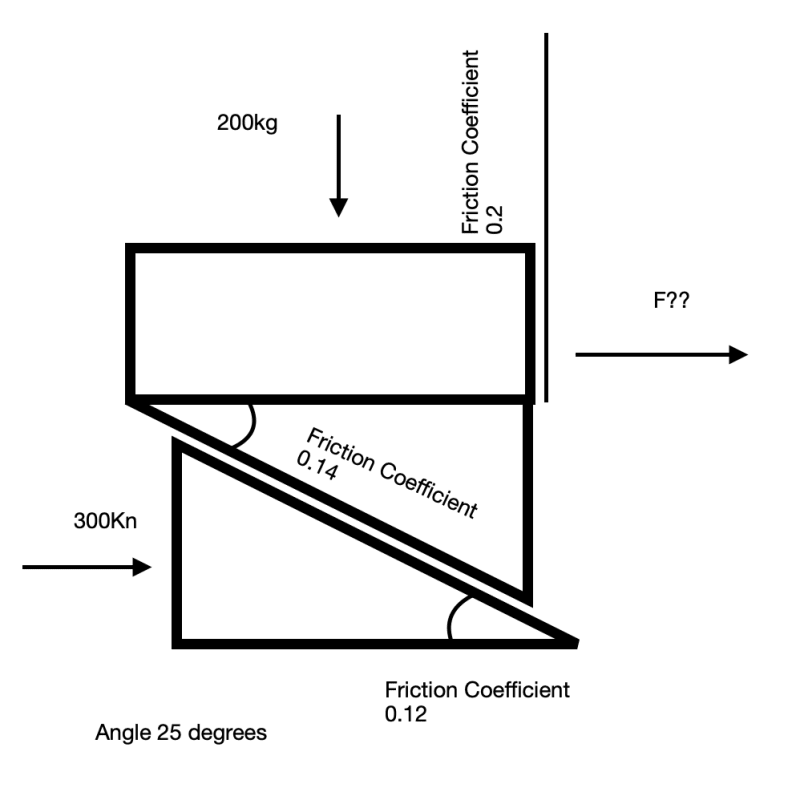Poveydesign
Mechanical
- Aug 13, 2024
- 3
Hi Guys,
Wondering if someone on here can help me I'm trying to calculate some wedge forces for 2 wedges acting together and the resultant force that comes from the rear of the top wedge. This is for an expanding item. I have attached a sketch which may make more sense.
Thank you in advance
Ian
Wondering if someone on here can help me I'm trying to calculate some wedge forces for 2 wedges acting together and the resultant force that comes from the rear of the top wedge. This is for an expanding item. I have attached a sketch which may make more sense.
Thank you in advance
Ian

